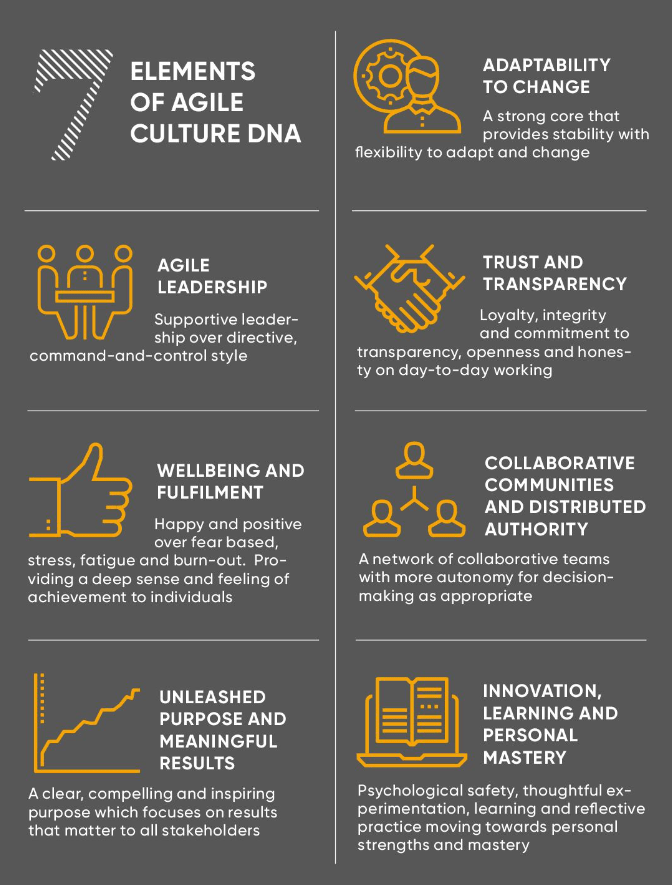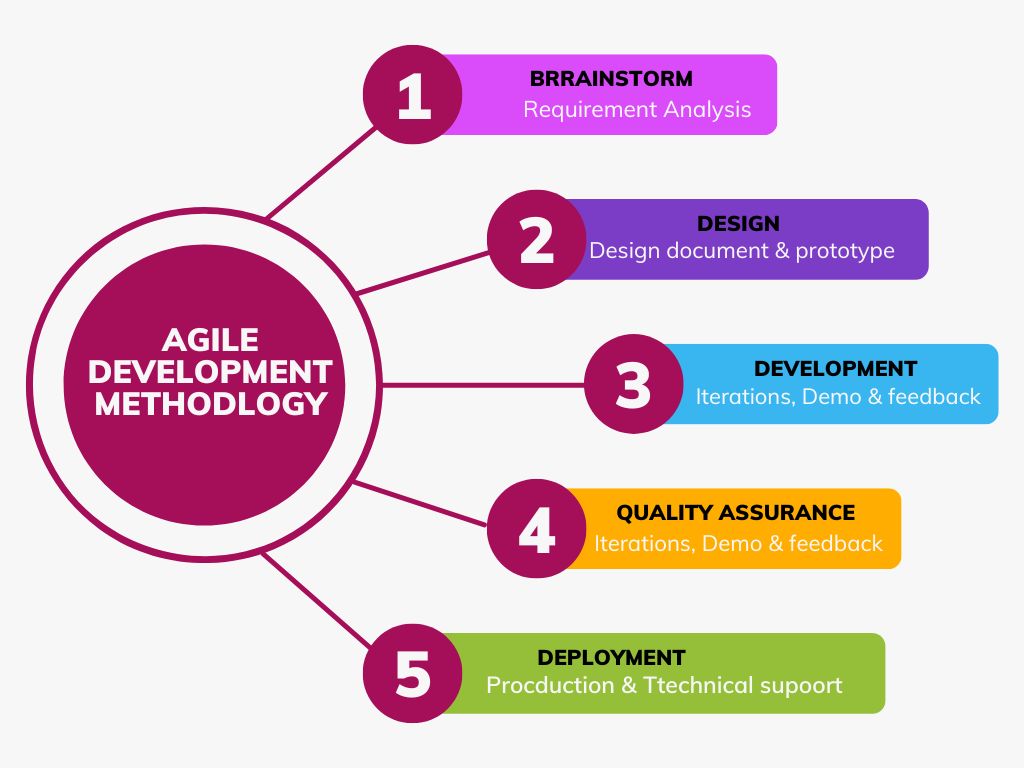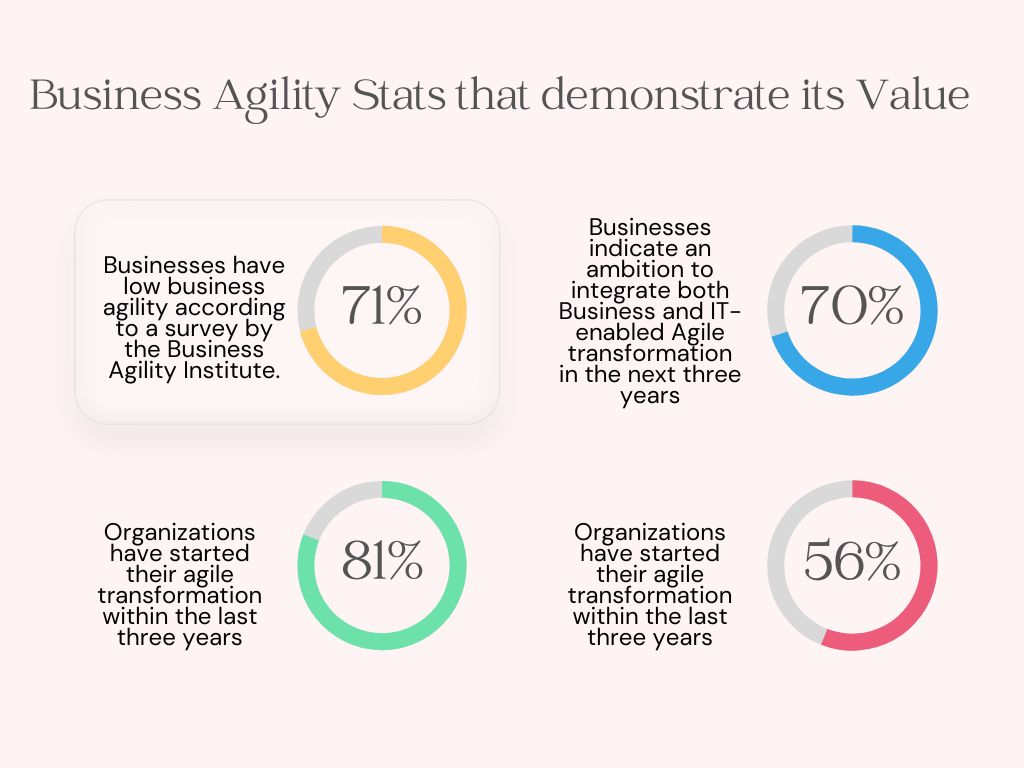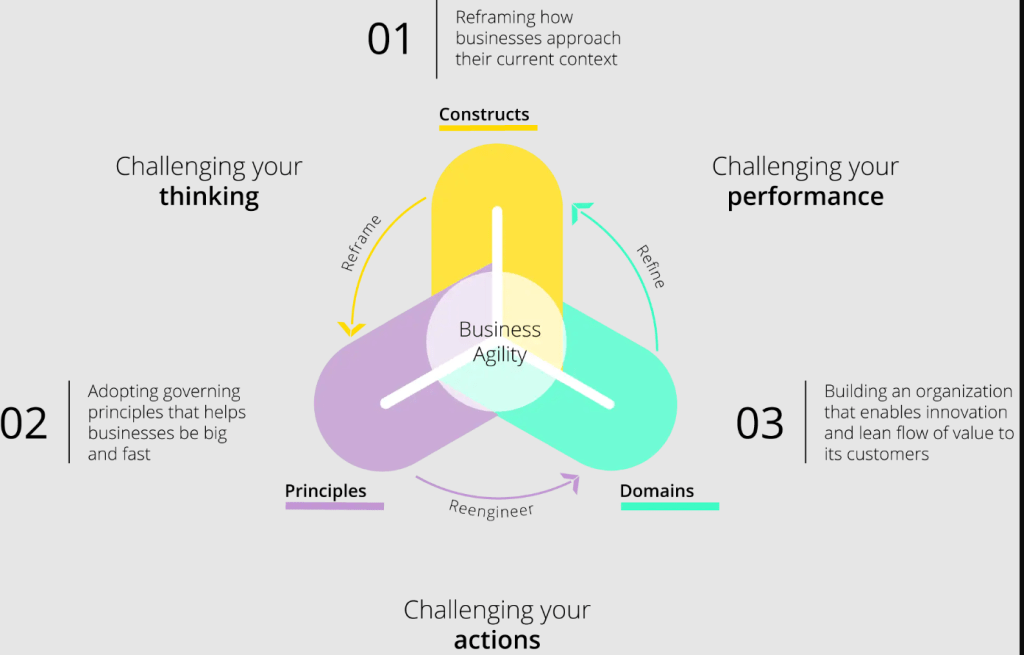Business Agility Transformation- Essential Insights
Introduction
Agility:
Agility refers to the ability of an organization or system to quickly respond to changes and adapt to new situations. In business, agility is seen as a critical attribute for success in today’s rapidly changing market conditions. An agile organization can quickly pivot its strategy, processes, and operations to respond to new market opportunities, customer needs, or technological advancements. This flexibility and quickness to adapt can provide a significant competitive advantage.
Agility transformation:
Agility transformation refers to the process of transforming a company or organization from a traditional, rigid structure to one that is more flexible, adaptable, and responsive to change. This transformation typically involves a shift in culture, mindset, and operating practices, with a focus on empowering employees, fostering collaboration, and embracing innovation.
Why is agility important in business?
Today, I will be taking a look at what business agility is and look at some agility examples and how an agile business has a distinct advantage over its peers by putting the right processes in place.
Let’s take an example where with business intelligence, a company can receive actionable data on an array of processes, but let’s just say that you’ve used BI, and the data provided shows there’s an enormous inefficiency with a worker manually invoicing customers.
Maybe it was going under the radar before, but now we know that there’s an issue, and we can implement an RPA solution to automate the task, allowing the worker to focus on more meaningful tasks, and we can save money on the labor costs of a menial process.
What is the result of involving the agility transformation into the business?
–The result is a more efficient business.
Note:
- While we have streamlined a process, our competitors who use their gut feeling for decision-making are continuing to be wasteful with their resources—often unknowingly.
- With successful organizations, only 40% base their decisions on gut feeling. For less successful enterprises, this number jumps to 70%.
- Impact used low-code development to deliver an app that was functional, fast, and readily accessible for their prospects and customers, giving them a huge boost over their competitors.
This is an example of how technology can be leveraged to create a more agile approach to business processes.
What Does an Agile Business Look Like?
We’ve had a look at an example of how an agile business can solve an issue and improve its efficiency in doing so, but what does an agile organization look like?
I have mentioned the key areas of business agility within a company and used examples to illustrate why agility is important.
Agile culture:
As with virtually anything that involves the implementation of major new practices or processes within an organization, culture is key.
Business agility is a guiding philosophy behind a digital transformation strategy, which itself is a disruptive (in the good sense) approach to business.
When you’re introducing a new way of doing things into the office, employees can be reticent, but to a modern organization, agility as a core value is a must.
Sure, it might be easy to have an accepting culture in a tech company or marketing agency, but what about a manufacturing firm? Or a nonprofit that’s used to doing things a certain way?

Well, business agility requires that the company has buy-in from employees, which must be done from the top down, and clearly and decisively that benefits them
If workers have new technologies imposed upon them with no support, not only will they not engage with them, but it will also actively harm progress towards an agile culture.
One of the key reasons digital initiatives fail is for precisely this reason: a lack of care from the top about how they should handle changes internally.
Agile internal organization:
Ensuring agility in your internal operational processes is a key aspect of business process agility.
What do we mean by this exactly?
-Well, let’s say a business has just invested in new servers to house all their data and their employees’ work.
That’s great! For now—but what about in a year?
Now, let’s talk about another business that has taken a different approach.
They’ve decided to move all their data to the cloud, and they similarly have run out of space by the time a year’s up.

–What do they do?
They scale their cloud storage, which is maintained and secured by another business (such as Microsoft, Amazon, or Google), and continue their business as usual.
The examples here are a good demonstration of how a business that exhibits agility can have a clear advantage over its competitors.
Of course, it’s not just about server space, but virtually everything within a business. Got a slow manual process? You can respond quickly by getting an automation solution from your cloud services provider and implementing it as soon as possible.
With the right process in place, an agile business can react quickly to improve its internal processes on a dime.
These examples here are a good demonstration of how a business that exhibits agility can have a clear advantage over its competitors.
Of course, it’s not just about server space, but virtually everything within a business. Got a slow manual process? You can respond quickly by getting an automation solution from your cloud services provider and implementing it as soon as possible.
With the right process in place, an agile business can react quickly to improve its internal processes on a dime.
Agile solutions:
One of the biggest aspects of agility is using big data and analytics to help fuel decision-making.
A good example of this would be manufacturing firms dealing with supply chain disruptions.
An agile business can implement an ERP solution, which will crawl data and give you reports which predict disruptions and allow you to manage them as best you can.
Using multiple areas of analysis, it will look at trends, historical data, inconsistencies, and other variables to give you the best chance of mitigating any disruption in the future, whether it’s from a seasonal change or something completely out of your control.
Business Agility Stats That Demonstrate Its Value

Improving Business Agility:
Agile organizations have several things in common that mark them apart from others.
- These things are namely organizational agility and business change agility.
- If companies want to become agile, it’s important for them to address these two key areas with solutions that facilitate agility in both.
- In terms of organizational agility, as i noted above, it’s crucial that businesses have an operational structure that allows them to be agile with respect to scaling—businesses today are able to quite effortlessly shift their solution use, when necessary, through the adoption of cloud services.
- With regard to business change agility, it’s important for companies to have a change management approach that is comprehensive and continuous.

Conclusion:
Agile businesses can navigate their way through trouble by using digital technology and a change of culture to move forward.
Businesses need to be agile because these types of organizations are invariably more successful than their competitors, particularly those who are reluctant to change.
As we move forward, and organizations continue to digitally transform their operations, it’s imperative for them to build, grow, and maintain business agility in order to tackle future challenges head-on.
Add Comment
You must be logged in to post a comment.








